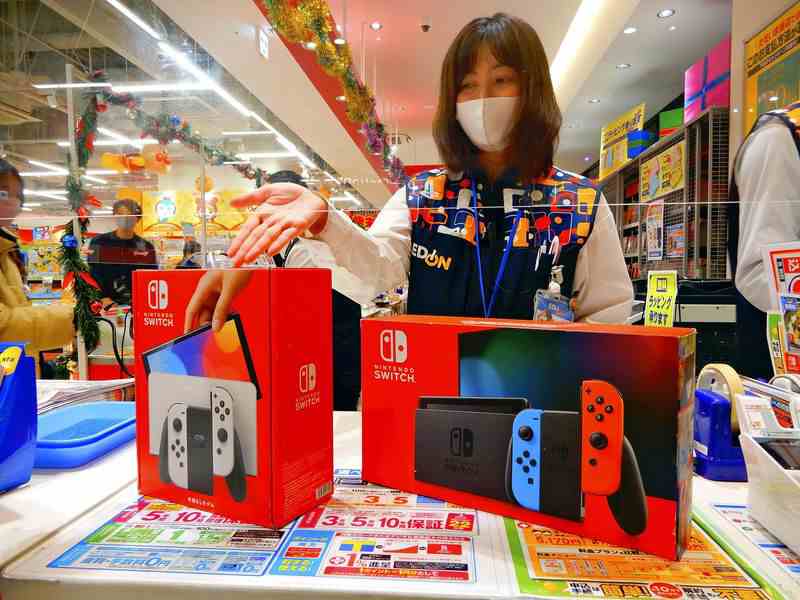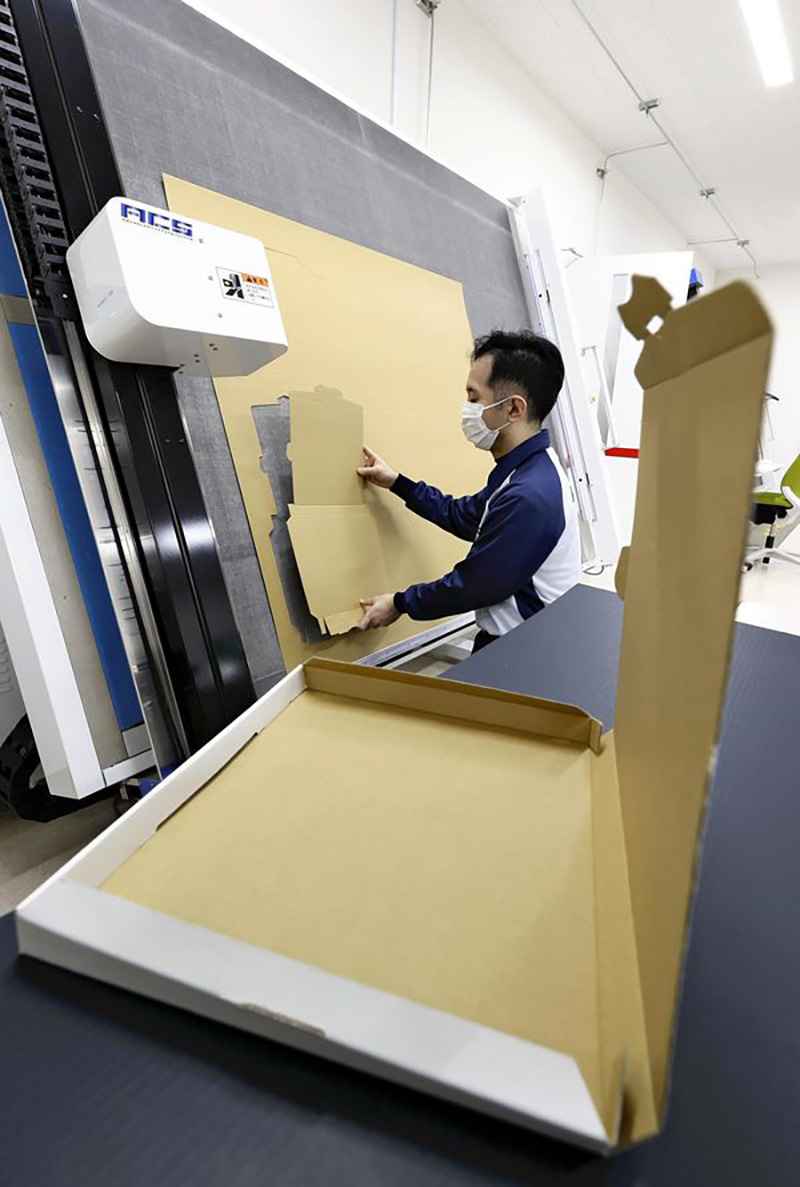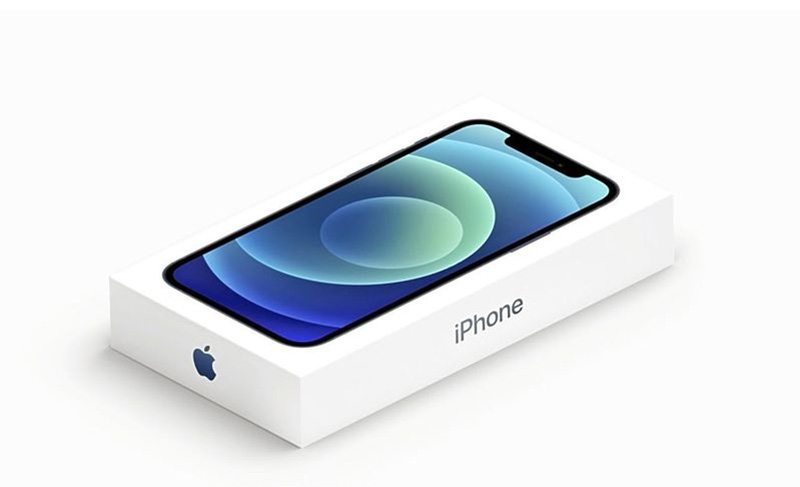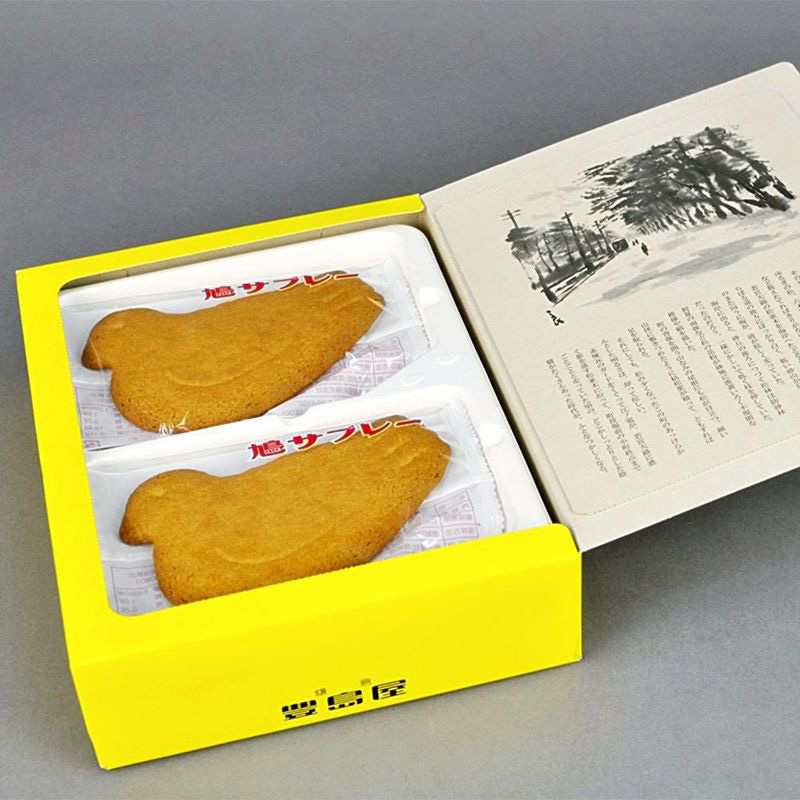
The box for the new model of Nintendo Switch, left, is shown next to the conventional model, right, at Edion Corp.’s flagship Namba store in Osaka.
7:52 JST, January 19, 2022
When Nintendo Co. released the latest version of its popular game console, Nintendo Switch, in October, there was one other noticeable difference. It came in a box 20% smaller compared to the previous model.
Companies are rethinking excessive packaging, and have begun reducing the size of cartons for products and cardboard boxes for mail orders. It is a response to consumer complaints of having to find space to store the boxes or having to dispose of them.
Helping push the trend are packaging material manufacturers, who are coming up with technologies and products for more efficient packaging.
Nintendo took a new look at packaging as consumer demand for smaller boxes grows for various reasons, whether it be environmental concerns or lack of storage space. The company said the new Switch package also helps reduce warehousing and shipping costs.

Cardboard boxes of various shapes are being designed at Rengo’s central research laboratory in Osaka to meet client specifications.
“Smaller boxes are easier to carry home, and are better for the environment,” said a woman in her 30s who was shopping in the game section of electronics retailer Edion Corp.’s flagship Namba store in Osaka.
Apple Inc., maker of the ubiquitous iPhone, has reduced the number of accessories since the release of the iPhone12 in 2020, and the thickness of the box is now half that of the original. Online shopping giant Amazon.com, Inc. is now using paper bags for certain products.
The de-plasticization of packaging is also making progress.
In October, Toshimaya, Kanagawa Prefecture’s Kamakura maker famous pigeon-shaped cookie “hato sable,” switched from plastic to paper for the containers inserted into the box. Likewise, apparel giant H&M now uses paper bags instead of plastic ones for shipping products bought online.

iPhone 12 box
According to Rengo Co., a major cardboard manufacturer, it is increasingly receiving inquiries from companies that want to reconsider the boxes and packaging materials that they use.
In autumn last year, Rengo finished development of an automatic packaging device that measures the size of a product on a conveyor belt and creates a corrugated box of the optimal size, which it is marketing to retailers and other businesses.
“It is no longer necessary to fill empty spaces in the box with air bags,” a person in charge of the project pointed out.
In the background of these changes, the market for packaging materials is expanding.
The Fuji Chimera Research Institute, Inc., estimates that the domestic market for containers, packaging and materials will reach ¥4 trillion in 2024, an increase of 3.5% from 2020.
“We expect various types of eco-friendly packaging materials to emerge in the near future,” said a staff member at the research firm.

Paper is now used in the Hato sable container
More online sales, more home waste
While packaging materials may be becoming simpler, the amount of waste from boxes and other packaging is increasing.
The big driver behind this trend, in addition to continued growth of online shopping, is increasing demand for takeaway meals such as bento lunch boxes brought on by the pandemic.
According Environment Ministry statistics, 63% of household waste in fiscal 2020 consisted of containers and packaging in terms of volume, an increase of about 30% from 10 years ago.
Risa Kojima, director of Gomi-Japan, a non-profit organization in Kobe which is leading a movement for appropriate packaging, asserts, “It is important in society as a whole to increase awareness that ‘when it comes to packaging, simple is better.’”
"Business" POPULAR ARTICLE
-

Keidanren Chairman Yoshinobu Tsutsui Visits Kashiwazaki-Kariwa Nuclear Power Plant; Inspects New Emergency Safety System
-

Tokyo Economic Security Forum to Hold Inaugural Meeting Amid Tense Global Environment
-

Imports of Rare Earths from China Facing Delays, May Be Caused by Deterioration of Japan-China Relations
-

University of Tokyo Professor Discusses Japanese Economic Security in Interview Ahead of Forum
-

Japan Pulls out of Vietnam Nuclear Project, Complicating Hanoi’s Power Plans
JN ACCESS RANKING
-

Keidanren Chairman Yoshinobu Tsutsui Visits Kashiwazaki-Kariwa Nuclear Power Plant; Inspects New Emergency Safety System
-

Tokyo Economic Security Forum to Hold Inaugural Meeting Amid Tense Global Environment
-

Imports of Rare Earths from China Facing Delays, May Be Caused by Deterioration of Japan-China Relations
-

University of Tokyo Professor Discusses Japanese Economic Security in Interview Ahead of Forum
-

Japan Pulls out of Vietnam Nuclear Project, Complicating Hanoi’s Power Plans

























